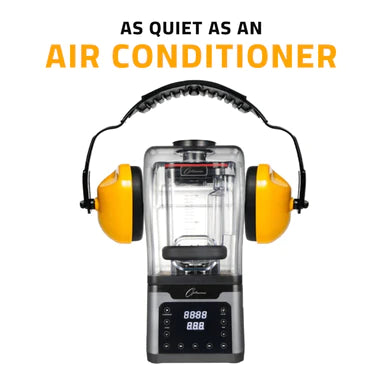“Will my blender be too loud?” This question is being raised again and again by clients who are looking to improve their lifestyle by investing in a high-speed blender. Some even hesitate with their purchase, thinking of their roommates and neighbors. Surely no one would love to wake up to the excruciating, broken lawnmower sounds some blenders make while on! So the question is not “To blend or not to blend?” (we’re definitely sure we want a healthy fix in the morning!), but rather “Will this noise make my ears bleed or not?” We at Froothie want to give you an overview, tell you our opinion and hand you some helpful tips and tricks.
More Power = More Noise
Let’s clear one thing up from the start: high-speed, increased-power blenders are usually loud. Period. They boost the power of 1000W and more - take, for instance, our Optimum 9200A High-Speed Vortex Blender, which reaches 2,611W, or the Vitamix 5200 Blender, with its 1,380W Motor. Such machines are never really quiet. Blending hard fruit, vegetables, nuts, ice, grains and leafy greens requires power, and increased power will mean increased noise. Loudness is not the only aggravating aspect - there’s also the tone and the pitch of the blender noise to take in. Every person is different, but in general, we can agree we all feel uncomfortable with high shrill tones. The reason is in human nature: on one hand, high tones like screams indicate an imminent danger, which triggers a panic signal in the brain and generates negative reactions such as goosebumps; on the other hand, deep tones are generally better, although a too-deep-sound can be felt like a roar.Cheaper = Louder
Most low-cost blenders are loud even if their power is not that high. This is caused by bad insulation, low-class casings and cheap materials. Good insulation of the blender and a corresponding good engine can contribute to a lowering of the loudness.
Can you reduce the noise made by your blender?
Yes, you can! The producer and distributor of the Revoblend Blender developed the Revo2pads, a special type of underlay pads made to be placed under the blender. One of the pads has a 6mm layer of rubber, which filters the vibration, and the other one has an 8mm layer of pure new wool for loudness absorption. The pads are available also separately but are best in combination.





